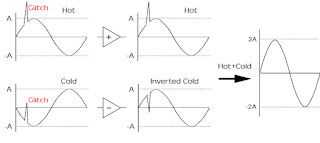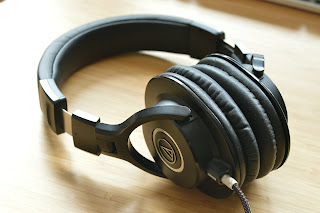When we shop for a pair of headphones / earphones, along with the exorbitant price we come across terms such as "Active Noise Cancellation" or "Passive Noise Cancellation / Noise Isolation" and more often than not we tend to get bombarded with such fancy terms. So without further ado, let's get it sorted.
We will be mainly looking at two main aspects i.e. the design and the working of each type.
1. Passive Noise Cancelling / Noise Isolating Headphones
This deals with only the physical aspect of blocking outside noise from entering our ears, it isn't some "technology" as such. The efficiency depends on the kind of padding that is provided by the headphone and also, how well it fits on our ears. There isn't much going on here except the padding physically blocking out the ambient noise. This will suffice in an environment where there isn't much of disturbance.
Since the working doesn't involve any special technology, these less sophisticated headphones are usually more affordable than the ones with ANC technology. Now let's take a look at how ANC headphones work.
2. Active Noise Cancelling (ANC) Headphones
Noise cancellation is where things get a little bit complicated as there is an interesting process going on here, we'll go into this in detail in a bit. But to put it in a simple way, the headphones are equipped to produce an inverse wave (w.r.t original sound signal) so that the signal containing the noise gets cancelled.
If closely observed (in Fig.1), one can see that there is a microphone that is present (the little pores) on the earphones, the microphone detects the kind of noise that is prevalent in the environment and sends this information to the circuitry present inside. The circuitry then produces the exact negative signal (Fig. 2) which is fed to our ears (Destructive Interference). When this happens most of the outside interference is cancelled and results in only the desired audio signal being fed into our ears.
Conclusion
While the headphone removes most of the unwanted noise, it should be kept in mind that noise cancelling doesn't eliminate the background noise it only removes the constant/low frequency noise that occurs while traveling in a train or the buzzing sound of many people talking. It is suitable for people who travel a lot on regular basis and not for people who are extremely particular about the clarity as it cancels out some of the low frequencies and it also requires a (rechargeable) battery which is not intended for people who are going to use their headphones in a studio. Last but not the least, these headphones usually cost a bomb due to the technology that they're equipped with, when compared to noise isolating headphones/earphones.
----
I hope you all got a clear picture of how these two things work. If you've any doubt/query, drop them in the comments below, i'll definitely get back asap. Do share it with others if you found this to be informative/interesting and be sure to check out other posts here.
Next i will be explaining about the types of headphone amps and i'll also be doing some gear review, so stay tuned!
Reference -
1. ANC
We will be mainly looking at two main aspects i.e. the design and the working of each type.
1. Passive Noise Cancelling / Noise Isolating Headphones
This deals with only the physical aspect of blocking outside noise from entering our ears, it isn't some "technology" as such. The efficiency depends on the kind of padding that is provided by the headphone and also, how well it fits on our ears. There isn't much going on here except the padding physically blocking out the ambient noise. This will suffice in an environment where there isn't much of disturbance.
 |
| The Sony MDR 1RBT is a circum-aural closed back headphone that provides excellent cushioning which helps in blocking out the ambient noise thereby providing the listener a peaceful listening experience. (click here to know more about headphones) |
Since the working doesn't involve any special technology, these less sophisticated headphones are usually more affordable than the ones with ANC technology. Now let's take a look at how ANC headphones work.
2. Active Noise Cancelling (ANC) Headphones
Noise cancellation is where things get a little bit complicated as there is an interesting process going on here, we'll go into this in detail in a bit. But to put it in a simple way, the headphones are equipped to produce an inverse wave (w.r.t original sound signal) so that the signal containing the noise gets cancelled.
 |
| 1. The Bose QC20i noise cancelling earphones |
If closely observed (in Fig.1), one can see that there is a microphone that is present (the little pores) on the earphones, the microphone detects the kind of noise that is prevalent in the environment and sends this information to the circuitry present inside. The circuitry then produces the exact negative signal (Fig. 2) which is fed to our ears (Destructive Interference). When this happens most of the outside interference is cancelled and results in only the desired audio signal being fed into our ears.
Conclusion
While the headphone removes most of the unwanted noise, it should be kept in mind that noise cancelling doesn't eliminate the background noise it only removes the constant/low frequency noise that occurs while traveling in a train or the buzzing sound of many people talking. It is suitable for people who travel a lot on regular basis and not for people who are extremely particular about the clarity as it cancels out some of the low frequencies and it also requires a (rechargeable) battery which is not intended for people who are going to use their headphones in a studio. Last but not the least, these headphones usually cost a bomb due to the technology that they're equipped with, when compared to noise isolating headphones/earphones.
----
I hope you all got a clear picture of how these two things work. If you've any doubt/query, drop them in the comments below, i'll definitely get back asap. Do share it with others if you found this to be informative/interesting and be sure to check out other posts here.
Next i will be explaining about the types of headphone amps and i'll also be doing some gear review, so stay tuned!
Reference -
1. ANC
























